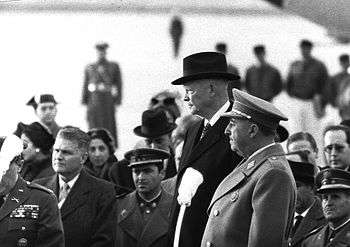Pact of Madrid

The Pact of Madrid, signed in 1953 by Spain and the United States, ended a period of virtual isolation for Spain. This development came at a time when other victorious allies of World War II and much of the rest of the world remained hostile to what they regarded as a fascist regime sympathetic to the Nazi cause and established with Axis assistance. The 1953 accord took the form of three separate executive agreements that pledged the United States to furnish economic and military aid to Spain. The United States, in turn, was to be permitted to construct and to utilize air and naval bases on Spanish territory (Naval Station Rota, Morón Air Base, Torrejón Air Base and Zaragoza Air Base).
Although not a full-fledged military alliance, the pact did result in a substantial United States contribution to the improvement of Spain's defense capabilities. During the initial United States fiscal years 1954 to 1961 phase, military aid amounted to US$500 million, in grant form. Between 1962 and 1982, a further US$1.238 billion of aid in the form of loans (US$727 million) and grants (US$511 million) was provided. During the period 1983 to 1986, United States military aid, entirely in the form of sales under concessional credit terms, averaged US$400 million annually, but it declined to slightly more than US$100 million annually in 1987 and in 1988. The military credits were scheduled to be phased out in the fiscal year 1989, in keeping with Spain's growing self-sufficiency in national defense. More than 200 Spanish officers and NCOs received specialized training in the United States each year under a parallel program.
See also
Sources
![]() This article incorporates public domain material from the Library of Congress Country Studies website http://lcweb2.loc.gov/frd/cs/.
This article incorporates public domain material from the Library of Congress Country Studies website http://lcweb2.loc.gov/frd/cs/.